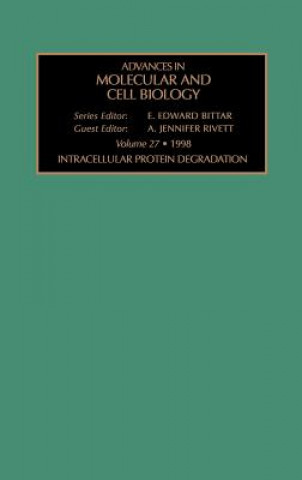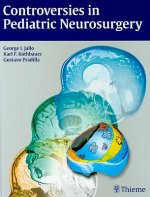
Kézbesítés
Vásárlási tanácsadó
15 967 773 könyv 175 nyelven








Összes nyelv megjelenítése (175)





Nem vált be? Semmi gond! Nálunk 30 napon belül visszaküldheti
 Ajándékutalvány
bármilyen értékben
Ajándékutalvány
bármilyen értékben
Ajándékutalvánnyal nem nyúlhat mellé. A megajándékozott az ajándékutalványért bármit választhat kínálatunkból.
Intracellular Protein Degradation
 Angol
Angol
 517 b
517 b
30 nap a termék visszaküldésére
Ezt is ajánljuk


This volume brings together a set of reviews that provide a summary of our current knowledge of the proteolytic machinery and of the pathways of protein breakdown of prokaryotic and eukaryotic cells. Intracellular protein degradation is much more than just a mechanism for the removal of incorrectly folded or damaged proteins. Since many short-lived proteins have important regulatory functions, proteolysis makes a significant contribution to many cellular processes including cell cycle regulation and transcriptional control. In addition, limited proteolytic cleavage can provide a rapid and efficient mechanism of enzyme activation or inactivation in eukaryotic cells. In the first chapter, Maurizi provides an introduction to intracellular protein degradation, describes the structure and functions of bacterial ATP-dependent proteases, and explores the relationship between chaperone functions and protein degradation. Many of the principles also apply to eukaryotic cells, although the proteases involved are often not the same. Interestingly, homologues of one of the bacterial proteases, Ion protease, have been found in mitochondria in yeast and mammals, and homologues of proteasomes, which are found in all eukaryotic cells have been discovered in some eubacteria. Studies of proteolysis in yeast have contributed greatly to the elucidation of both lysosomal (vacuolar) and nonlysosomal proteolytic pathways in eukaryotic cells. Thumm and Wolf (chapter 2) describe studies that have elucidated the functions of proteasomes in nonlysosomal proteolysis and the contributions of lysosomal proteases to intracellular protein breakdown. Proteins can be selected for degradation by a variety of different mechanisms. The ubiquitin system is one complex and highly regulated mechanism by which eukaryotic proteins are targetted for degradation by proteosomes. In chapter 3, Wilkinson reviews the components and functions of the ubiquitin system and considers some of the known substrates for this pathway which include cell cycle and transcriptional regulators. The structure and functions of proteosomes and their regulatory components are described in the two subsequent chapters by Tanaka and Tanahashi and by Dubiel and Rechsteiner. Proteasomes were the first known example of threonine proteases. They are multisubunit complexes that, in addition to being responsible for the turnover of most short-lived nuclear and cytoplasmic protein, are also involved in antigen processing for presentation by the MHC class I pathway. Recent studies reviewed by McCracken and colleagues (chapter 6) lead to the exciting conclusion that some ER-associated proteins are degraded by cytosolic proteasomes. Lysosomes are responsible for the degradation of long-lived proteins and for the enhanced protein degradation observed under starvation conditions. In chapter 7 Knecht and colleagues review the lysosomal proteases and describe studies of the roles of lysosomes and the mechanisms for protein uptake into lysosomes. Methods of measuring the relative contribution of different proteolytic systems (e.g., ubiquitin-proteasome pathway, calcium-dependent proteases, lysosomes) to muscle protein degradation, and the conclusions from such studies, are reviewed by Attai and Taillinder in the following chapter. Finally, proteases play an important role in signaling apoptosis by catalyzing the limited cleavage of enzymes. Mason and Beyette review the role of the major players, caspases, which are both activated by and catalyze limited proteolysis, and also consider the involvement of other protoelytic enzymes in this pathway leading cell death.
Információ a könyvről
 Angol
Angol




 Hogyan vásároljunk
Hogyan vásároljunk























